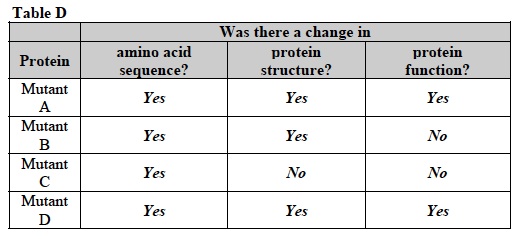Teacher Portal
Genes and Proteins
Deep Analysis
Deep Analysis
Genes and Proteins

Deep Analysis
Use the questions below to go deeper into the scientific concepts and applications of each Investigation. Note that questions highlighted in orange text are also featured in Phase 3.1 (Conclusions) of the Student Guide PDF.
Investigation 1
- How are proteins different from DNA and RNA? Proteins are made up of building blocks called amino acids. DNA and RNA are made up of building blocks called nucleotides (bases).
- Each gene encodes for a single protein. Genes are made of DNA. How does the information in DNA get converted to proteins? The specific DNA sequences of genes are transcribed into messenger RNA (mRNA) in the nucleus of cells. The mRNA carries the information into the cytoplasm of the cell where it is translated into amino acid sequences on structures called the ribosome.
- What role does RNA play in the cell? RNA acts as a messenger, carrying the genetic information encoded by DNA in the nucleus to the ribosomes in the cytoplasm. On ribosomes, the code (mRNA sequence) is read and translated into protein. Note to teacher: There are many other types of RNA and functions of RNA in cells, but mRNA is the only type of RNA introduced in this.
- How does the cell know which amino acids to place in a protein? The mRNA is “read” by the ribosome in groups of three adjacent bases called codons. Each codon specifies a single amino acid that is placed in the protein. Some codons are stop codons that signal the end of the protein amino acid sequence.
- Discuss the impact of mutations in DNA on the structure and function of proteins.
- Ask students to think about the sequences of the four different DNA mutations and the original sequence. How do they compare to one another and to the original sequence? How are they similar and how are they different?
- Ask students to think about the sequences of the mutant proteins and the original protein’s sequence. Ask students to compare the five sequences to each other. How are they similar and how are they different?
- How can mutations in DNA cause changes in protein function? The function of a protein is directly related to its structure. Structure depends on the amino acid sequence of a protein. Mutations in DNA lead to changes in the mRNA codons that specify which amino acids to place in the protein.
- Do mutations in DNA always cause a change in amino acid sequence? No. A change in DNA sequence does not always lead to a change in the amino acid sequence. This is due to redundancy built into the genetic code. Some amino acids are coded for by multiple codons. If a mutation causes a change to a different codon that still encodes for the original amino acid, there will be no change in amino acid sequence observed. If students are having trouble with this concept, refer to Mutation 3 in this Investigation which had a change in DNA sequence but no change in amino acid sequence. Have students look at Table B and lead a discussion of how the amino acids serine and valine both have multiple codons. In these cases, different base sequences code for the same amino acids.
- Ask students to decide how the data that they collected in the Investigation fits together. Ask students to review their data and answer the following question:
- Can a change in the amino acid sequence of a protein change the function of the protein? Explain your answer. Student answers will vary. Discuss student suggestions. In this Investigation, all changes in the amino acid sequence led to a change in the function of the protein. Inform students that this is not always the case, as will be demonstrated in the next Investigation. Students should record their conclusions in their Student Data Record.
Investigation 2
- For each mutant protein model, was there a change in the amino acid sequence as compared to the wild type protein? Record the answer (Yes or No) in Table D.
- Compare the way the model wild-type protein looked to the way the model mutant proteins looked. For each mutant protein model, was there a change in the structure as compared to the wild-type protein? Record the answers (Yes or No) in Table D.
- Compare the rate of water transfer for the wild-type protein to the rate for each mutant. For each protein model, was there a change in the function of the protein as compared to the wild-type protein? Record the answers (Yes or No) in Table D.

- Describe any changes in function observed with the model mutant proteins. Use data to support your answer. Mutant proteins A and D showed changes in function compared to the wild-type model protein. The rate of water transfer for Mutant A was lower (4 ml/s) than the rate for the wild-type (6.7 ml/s). Mutant D showed an increased rate of water transfer (16.5 ml/s) compared to the wild-type rate (6.7 ml/s). Student values will vary.
- Look at the results in Table D. Did every change in amino acid sequence cause a change in protein structure? Explain your answer. No. The change in amino acid sequence for mutant protein C did not cause a change in protein structure. Mutant C had the same structure (looked the same) as the wild-type protein.
- Look at the results in Table D. Did every change in protein structure cause a change in function? Explain your answer. No, not every change in protein structure caused a change in function. Changes in the protein structures following mutations A and D caused a change in protein function. However, the change in protein structure following mutation B did not cause a change in protein function.
- Are all mutations harmful? Explain your answer. No. Some mutations can be beneficial. Mutant D had a faster rate of water transfer than the wild-type protein. The rate of water transfer was 16.5 m/s for Mutant D compared to a transfer rate of 6.7 m/s for the wild-type protein. Assuming that a higher rate of water transfer would be beneficial, this would be a beneficial mutation.
Investigation 3
- Each body cell has two copies of each chromosome. These two copies are called homologous chromosomes. Are homologous chromosomes identical? Explain. No. Homologous chromosomes are not identical. Homologous chromosomes contain the same genes. However, they usually have different alleles of the genes. Homologous chromosomes are not identical because one chromosome originally came from the mother and one chromosome originally came from the father.
- Before mitosis begins, the cell is in interphase. What happens during this part of the cell cycle? Cells grow larger and all of the chromosomes are copied (duplicated). The two identical copies of each homologous chromosome are called sister chromatids and are joined together at the centromere.
- Mitosis is divided into four phases. What are the phases of mitosis in order? The four phases are: prophase, metaphase, anaphase, and telophase.
- What happens in prophase? In prophase, the chromosomes condense into rodlike structures that can be seen under the microscope. The nuclear membrane dissolves.
- How was prophase modeled in this Investigation? Prophase was modeled by removing the rubber band which represented the nuclear membrane.
- What happens in metaphase? In metaphase, duplicated chromosomes line up with the centromeres on spindle fibers in the center of the cells. How was metaphase modeled in this Investigation? Spindle fibers were modeled with string. One set of sister chromatids was placed on each spindle fiber with homologous chromosomes on adjacent fibers.
- What happens in anaphase? In anaphase, the sister chromatids separate and move down the spindle fibers to opposite ends of the cell.
- How was anaphase modeled in this Investigation? The clay representing the centromere was pinched in half and the gram cubes representing the sister chromatids were separated.
- What happens in telophase? The chromatids have moved to the ends of the spindle fibers. The spindle fibers disappear and new nuclear membranes form around each set of chromosomes.
- How was telophase modeled in this Investigation? The gram cubes representing chromatids were moved to the end of the strings. The strings representing the spindle fibers were removed. Rubber bands were placed around both sets of chromosomes to represent nuclear membranes.
- What would happen next in the cell cycle? The cell will divide (cytokinesis) and each new cell will have identical sets of chromosomes in its nucleus.
- What would happen if the DNA in a single cell had a mutation? Student answers may vary. In most cases, the mutation would not be passed on. Cells have complex proofreading and repair mechanisms to recognize and fix mutations as they occur. However, if a mutation was not repaired by the cell, this mutation would be passed on to daughter cells through mitosis and cell division.
Comprehension Check
- How does DNA control the functions of an organism? DNA controls the functions of an organism by coding for the proteins that carry out each individual function of the organism. This genetic information is carried from the DNA of a gene by mRNA that is then translated into a protein amino acid sequence. This was modeled in Investigation One by illustrating that the DNA and the RNA sequences determine a protein’s sequence. Changes in the protein sequence were shown to alter the function of the protein.
- Can mutations in DNA cause changes in an organism? In Investigation One, students demonstrated that mutations in a DNA sequence result in changes in a protein and therefore may lead to changes in an organism. However mutations may not always result in changes in a protein. If a particular mutation in a DNA sequence does not cause a change in amino acid sequence, then no change in the function of the protein will be observed. Some mutations to the water binding site of the protein, while changing the amino acid sequence resulted in no change in water transfer. Some mutations resulted in a greater rate of transfer while others resulted in a lower rate. Based on the results of Investigation Two, mutations can cause changes in protein structure and function which would lead to changes in an organism. These changes could be harmful or beneficial. However, as also illustrated in Investigation Two, not all changes in DNA sequence result in changes in an organism. In Investigation Two, students learned that mutations do not always lead to changes in amino acid sequence and therefore no change in protein structure or function. In Investigation Three, students discovered that changes in amino acid sequence do not always lead to changes in protein structure. It was also demonstrated that changes in protein structure do not always cause changes in protein function.
- Why can mutations in the DNA of a single cell affect the functions of an entire organism? In Investigation Three, students modeled how cells copy their DNA and divide so that each new daughter cell has the exact same DNA (chromosomes) as the original cell. If a mutation occurs in a cell’s DNA, it can be copied when the chromosomes duplicates and passed on to each new generation of cells. If students have difficulty with this concept, ask them to refer back to the diagrams they made as they modeled mitosis. Ask students to think of the orange gram cube as a mutation and follow what happens to the mutation as mitosis progresses. If a mutation causes a change in protein function, then this mutation will change protein function in each new daughter cell and could eventually affect the functioning of the organ and the entire organism.
